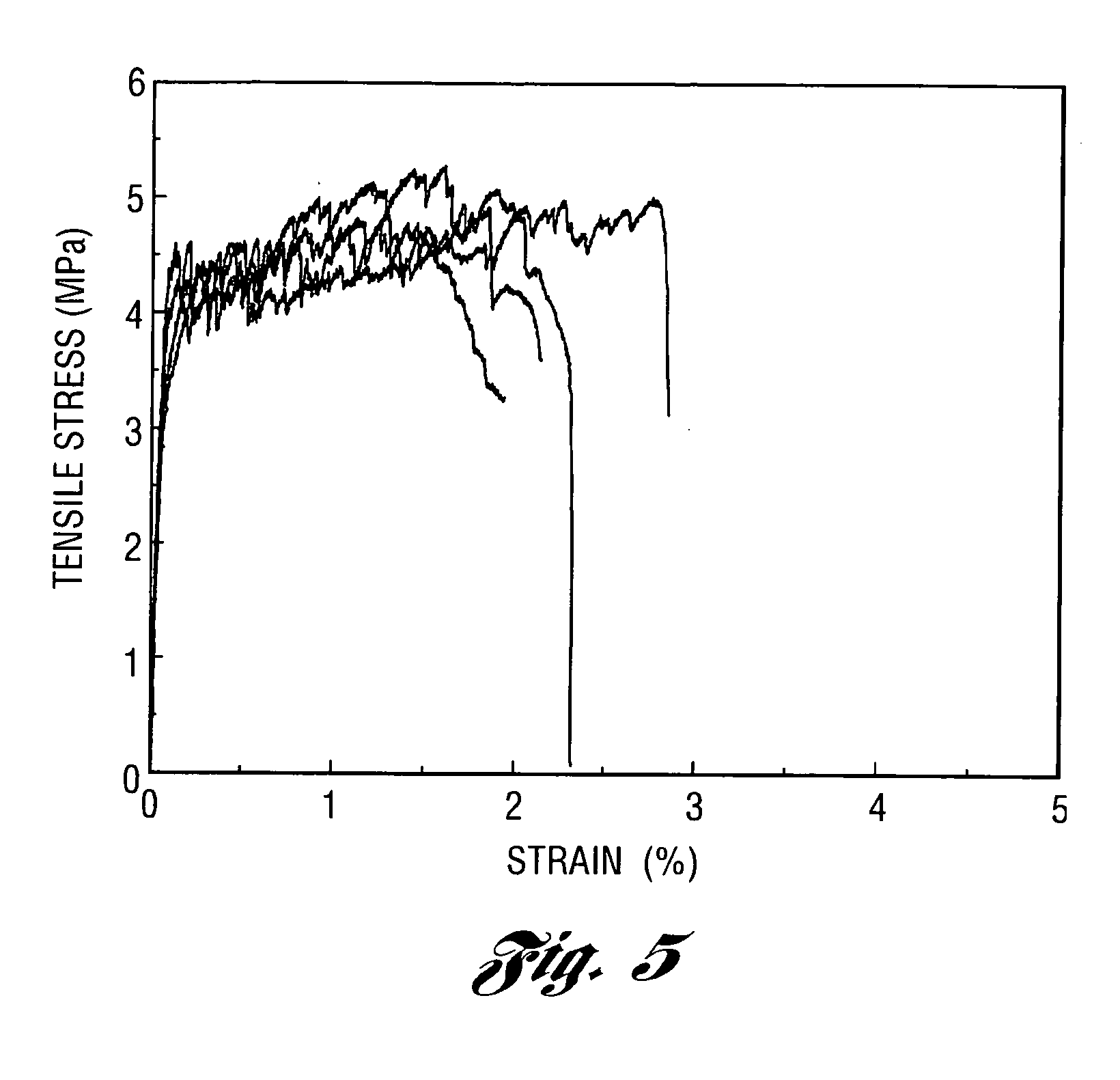Process for increasing the ductility of high performance fiber-reinforced brittle matrix composites, and composites produced thereby
a fiber-reinforced brittle matrix and composite technology, applied in the field of high-performance fiber-reinforced brittle matrix composites, can solve the problems of inability to achieve ductility, inability to improve uniaxial tensile strength nor tensile ductility, and inability to produce ductility of untreated polyvinyl alcohol fibers, which exhibit exceptionally strong matrix interactions, to achieve the effect of material increase of strain hardening behavior and other flaw
- Summary
- Abstract
- Description
- Claims
- Application Information
AI Technical Summary
Benefits of technology
Problems solved by technology
Method used
Image
Examples
examples 1-3
AND C1, C2
[0051] Three different particles were used as artificial flaws, including two types of low tensile strength particles and one type of plastic beads. The low tensile strength particles, under the commercial name Norlite™, are made from expanded shale and have low tensile strength due to a porous microstructure. Two sizes of Norlite™ particles were tested, with average sizes of 1.0 mm and 3.5 mm, respectively. The plastic beads used are polypropylene (PP) and have an elliptical shape and a smooth surface. The length of the long and short axes of the beads is about 4 mm and 2 mm, respectively. Since PP has very weak bond to a cementitious matrix, the interface will behave like an embedded crack. All three particles are graded and have a narrow size distribution. A narrow size distribution is preferable to encourage uniform cracking.
[0052] The mix proportions of five mixes, divided into two groups are listed in Table 1, where mixes in each group share same mix proportion exce...
PUM
| Property | Measurement | Unit |
|---|---|---|
| Fraction | aaaaa | aaaaa |
| Fraction | aaaaa | aaaaa |
| Fraction | aaaaa | aaaaa |
Abstract
Description
Claims
Application Information
 Login to View More
Login to View More - R&D
- Intellectual Property
- Life Sciences
- Materials
- Tech Scout
- Unparalleled Data Quality
- Higher Quality Content
- 60% Fewer Hallucinations
Browse by: Latest US Patents, China's latest patents, Technical Efficacy Thesaurus, Application Domain, Technology Topic, Popular Technical Reports.
© 2025 PatSnap. All rights reserved.Legal|Privacy policy|Modern Slavery Act Transparency Statement|Sitemap|About US| Contact US: help@patsnap.com



